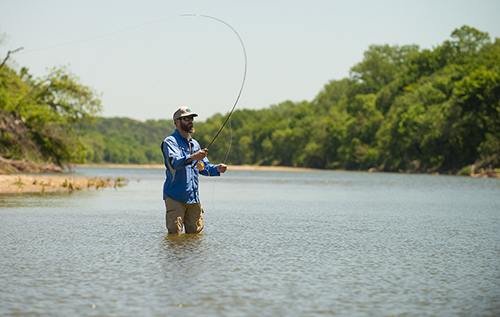
History of the Brazos River
A Brief Summary of Historic Past of the Brazos River in Texas
The Brazos River in Texas has a rich history that dates back to prehistoric times. Here is a brief overview:
- Indigenous Peoples: Before European exploration, various Native American tribes inhabited the region along the Brazos River. These included the Wichita, Tonkawa, and Tawakoni tribes.
- Spanish Exploration: Spanish explorers, including Álvar Núñez Cabeza de Vaca, were among the first Europeans to explore the area in the 16th century. However, it wasn’t until the 18th century that Spanish missions were established in the region.
- Mexican Period: With Mexico gaining independence from Spain in the early 19th century, the Brazos River became a crucial trade route. The Mexican government granted land to settlers, and Anglo-American colonization began.
- Texas Revolution: The Brazos River played a role in the Texas Revolution. In 1836, the decisive Battle of San Jacinto took place near the river, where Texan forces led by Sam Houston defeated the Mexican army, securing Texas independence.
- Republic of Texas: After gaining independence, Texas became a republic before joining the United States. The Brazos River remained vital for transportation and trade during this period.
- Civil War Era: During the Civil War, the Brazos River served as a transportation route for Confederate forces. Some skirmishes and battles occurred in the region.
- Post-Civil War: After the war, the expansion of railroads diminished the importance of river transportation. However, the Brazos River continued to be significant for agriculture and ranching in the region.
- 20th Century Development: With the advent of the 20th century, the Brazos River was dammed for flood control, water supply, and hydroelectric power. Notable dams include Possum Kingdom Dam and Lake Whitney Dam.
- Modern Era: Today, the Brazos River remains a crucial water source for Texas, supporting agriculture, industry, and urban areas. It has also become a popular recreational area, with numerous parks and reservoirs along its course.
Throughout its history, the Brazos River has played a pivotal role in the economic, cultural, and political development of Texas.
Thanks for reading this morning’s history lesson on a Texas River that many Texas fly fishers absolutely love to fish. There’s always some conversation going about Brazos River fly fishing somewhere – on forums, in club meetings and between experienced fly fishers who know how fickle sections of that river can be.
This river story was written by ChatGPT, and I will be feeding the Chat more historic questions about all the Texas Rivers we are interested in fly fishing this year. Then, we can see what ChatGPT has to say about specific Texas Lakes.
As for me, the video I made about the area of the Brazos below the Possum Kingdom Lake still has a little bit of popularity. A lot of fly folks make the mistake of not recognizing the conditions that make that area so great – great for only brief moments in time, before they are stripped clean of their fish population by fishing folks who must be really hungry.
One glaring omission that this Chat generated Texas History Lesson missed; the role of the Brazos River in the United States conservation movement – traced to the truly historic book, “Goodbye to a River,” by John Graves, and published way back in 1960. If you have never read this book, it plays a role in the fly fishing concept of running entire rivers and coasts and wholistic thinking about the waters we fly fish.
